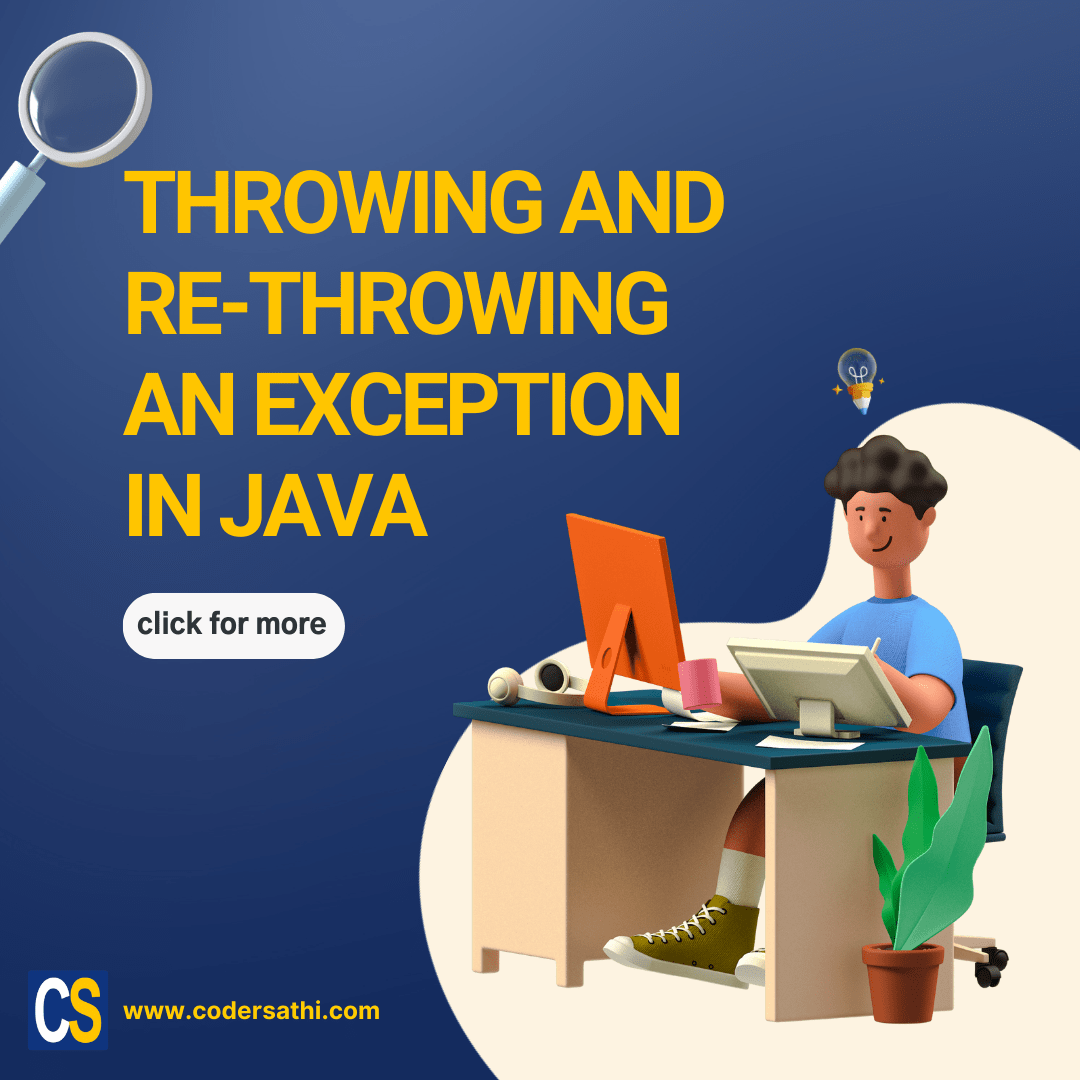When an exception is thrown, it is propagated up the call stack until it is caught by a try-catch block. If the exception is not caught, the program will terminate. Re-throwing an exception means throwing the same exception again after it has been caught in a try-catch block.
This can be useful for a number of reasons, such as:
- To pass the exception on to a higher-level method that can handle it.
- To add additional information to the exception object.
- To prevent the program from terminating.
Following is an example of how to throw and re-throw an exception in Java:
public class ExceptionDemo {
public static void main(String[] args) {
try {
// This method will throw an exception.
throw new RuntimeException("This is an exception");
} catch (RuntimeException e) {
// Add some additional information to the exception object.
e.setMessage("This is a more detailed message");
// Re-throw the exception.
throw e;
}
}
}
Following are some additional things to keep in mind when throwing and re-throwing exceptions in Java:
- When we re-throw an exception, we must use the
throwkeyword. - We can only re-throw an exception that has been caught in a try-catch block.
- If we re-throw an exception, the stack trace will be preserved.
- We can wrap an exception in another exception when we re-throw it. This is known as exception chaining.
FAQs
What is the purpose of re-throwing an exception in Java?
Re-throwing an exception allows us to propagate an exception up the call stack to a higher-level method or catch block while preserving the exception’s original type and message. It can be used for more specific error handling.
When is it appropriate to re-throw an exception in Java?
You should consider re-throwing an exception when you want to handle it at a higher level in the call stack, possibly in a different part of your code, or when you want to wrap the original exception in a more specific or custom exception type.
What happens if an exception is re-thrown but not caught again?
If an exception is re-thrown but not caught again, it will continue to propagate up the call stack until it is either caught or reaches the top level of your program. If it’s not caught anywhere, the program may terminate and display an error message.
Can I re-throw a different exception type than the one caught in the catch block?
Yes, you can re-throw a different exception type than the one caught in the catch block by creating a new exception object and using the throw statement with that new object.
What is the benefit of re-throwing exceptions with custom messages or additional information?
Re-throwing exceptions with custom messages or additional information can provide more context about the error, making it easier to diagnose and fix issues. It also allows us to create more meaningful error messages for users or developers.
